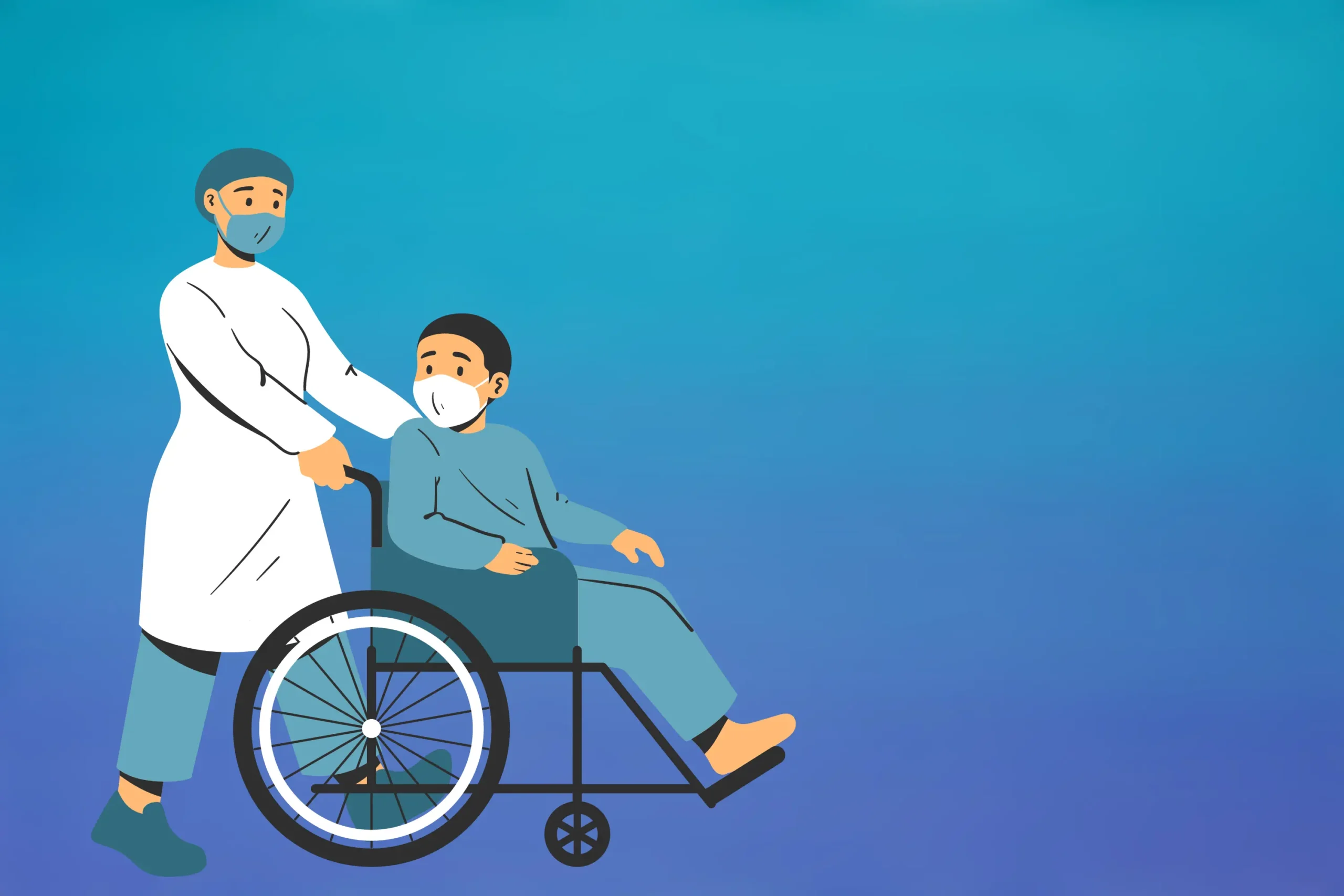At a glance:
- Understand the standard 90-day waiting period in trauma insurance and its financial implications.
- Weigh the pros and cons of shorter waiting periods, including higher premiums and faster payouts.
- Build an emergency fund, review debts, and consider income protection insurance to stay financially secure during the waiting period.
- Create a detailed budget, explore income replacement options, and manage out-of-pocket expenses effectively during the waiting period.
Trauma insurance, also known as critical illness insurance, provides financial support if you are diagnosed with a serious illness. In Australia, this type of insurance helps cover medical expenses, rehabilitation costs, and loss of income, providing a safety net during a critical time.
A significant aspect of trauma insurance is the waiting period – a specific timeframe after the policy starts, during which claims are not paid. This period, typically around 90 days, can pose financial challenges, especially if a critical illness occurs shortly after taking out the policy.
Understanding and planning for this waiting period is crucial to ensuring you remain financially secure until the insurance payout is available. Here’s what you need to know about this type of insurance to safeguard your financial well-being during critical illness.
Shorter Waiting Period: The Cost vs. Benefit
Some insurers offer trauma insurance with a shorter waiting period, such as 30 days. This option comes with distinct advantages and disadvantages that are crucial to consider:
Advantages of a Shorter Waiting Period
Faster Access to Payout: With a shorter waiting period, policyholders can receive financial support more quickly if a critical illness is diagnosed shortly after the policy starts. This can be particularly beneficial for covering immediate medical expenses and other urgent costs.
Peace of Mind: Knowing that financial help is available sooner can significantly reduce stress during a challenging time. The sooner you have access to funds, the better you can focus on recovery without worrying about financial constraints.
Potential Downsides
Higher Premiums: Shorter waiting periods increase insurers’ risk, leading to higher premiums. This means the policy becomes more expensive over time, which can strain your budget.
Limited Availability: Not all insurers offer shorter waiting periods, and those that do may have stricter eligibility criteria. It’s essential to shop around and compare options to find a policy that meets your needs.
Comparison Table: Waiting Period Options
Waiting Period Monthly Premium Annual Premium
30 Days $150 $1,800
60 Days $130 $1,560
90 Days $110 $1,320
Note: The costs included in the table are hypothetical. For actual quotes, it is recommended you visit an insurance provider’s website or use a comparison tool.
The premium cost for trauma insurance with different waiting periods (30 days, 60 days, and 90 days) can vary significantly based on several factors, including your age, health status, occupation, and the insurance provider’s policies. Generally, a longer waiting period can reduce your premium cost, while a shorter waiting period may increase it.
To get precise premium costs tailored to your situation, it’s best to use an insurance comparison tool or directly consult with an insurance provider.
Consider Expert Opinion
Consulting a financial advisor or insurance agency can help you determine the best waiting period for your needs. Aspect Underwriting offers expert advice on trauma insurance to help you make an informed decision. We provide tailored recommendations based on your financial situation and coverage requirements.
Financial Planning During the Waiting Period (Before a Potential Claim)
Proper financial planning is crucial, especially during the waiting period. Here are some strategies to consider:
Building an Emergency Fund
An emergency fund is essential to cover unexpected expenses during the waiting period. Aim to save enough to cover 3-6 months of living expenses. This fund can provide a safety net during the waiting period and beyond, ensuring you have the financial resources to manage day-to-day costs and any additional fees that arise.
Reviewing Existing Debts
Evaluate your current debts and explore consolidation or repayment strategies to minimise financial strain if you need to make a claim. Reducing debt can help you manage your financial obligations more effectively. Consider speaking to a financial advisor about the best strategies for managing debt, such as prioritising high-interest loans and exploring consolidation options.
Income Protection Insurance
Consider income protection insurance as an additional safety net. This type of insurance can provide regular payments if you are unable to work due to illness or injury, complementing trauma insurance coverage. Income protection insurance can help maintain your income flow during the waiting period, reducing the financial impact of a critical illness.
Maximising Your 90 Days: A Guide for Waiting Period Management
The standard 90-day waiting period requires careful management to ensure financial stability. Here are some tips:
Budgeting
Creating a detailed budget is essential during the waiting period. Track all expenses to identify areas where you can save. Free budgeting tools and resources are available online, such as the MoneySmart Budget Planner from ASIC.
Track Expenses
Monitor all your spending to understand where your money goes. This can help identify non-essential expenses that can be reduced or eliminated.
Set Priorities
Focus on essential expenses such as housing, utilities, food, and medical costs. Adjust your budget to ensure these priorities are met.
Utilise Tools
Free Budgeting tools like MoneySmart’s Budget Planner can help you create and manage a budget effectively.
Income Replacement Options
Explore options for replacing income during the waiting period:
Sick Leave Entitlements: Check your sick leave balance and understand your entitlements. Accrued sick leave can provide income during the waiting period.
Employer-Provided Income Protection: Some employers offer income protection schemes. Review your employment benefits to see if this applies to you and understand the terms and coverage.
Government Benefits: Centrelink provides various benefits, such as the Disability Support Pension. Before applying, ensure you meet the eligibility requirements, such as:
Residency Requirements:
- Must be an Australian resident.
- Must be living in Australia.
- Specific payments may have additional residency requirements (e.g., lived in Australia for a certain period).
Age Requirements: Age criteria vary for different payments. For example, Age Pension requires you to be of pension age, whereas Youth Allowance is for those aged 16-24.
Income and Assets Tests:
- Payments are subject to income and assets tests to determine eligibility and payment amounts.
- Income includes wages, investments, and other sources.
- Assets include property (excluding the family home), vehicles, and savings.
Employment Status: Some payments are designed for unemployed people (e.g., JobSeeker Payment), while others are for those who are working but meet certain conditions.
Specific Circumstances: Certain payments are available for particular circumstances, such as caring for someone (Carer Payment), having a disability (Disability Support Pension), or being a parent (Parenting Payment).
You can visit the Centrelink website for more information on available benefits and eligibility criteria.
Managing Out-of-pocket Expenses
Medical costs can be significant during the waiting period. Here are some ways to manage these expenses:
Private Health Insurance: If you have private health insurance, check your policy for medical expenses coverage. Understand what is covered and the limits of your policy.
Medicare: Medicare covers some medical services in Australia. Medicare in Australia is available to all Australian citizens, permanent residents, New Zealand citizens living in Australia, and certain temporary residents, including those from countries with reciprocal healthcare agreements, such as the UK and New Zealand. Asylum seekers and refugees may also be eligible. To apply, individuals need to provide proof of identity and residency, complete an enrolment form, and submit it to a Medicare service centre. Medicare covers various healthcare services, including GP visits, specialist consultations, public hospital treatment, prescription medications, and diagnostic tests. Visit the Medicare website for more information on what is covered and how to claim benefits.
Negotiating Costs: Speak with your healthcare providers about your situation. Some may offer payment plans or discounts for out-of-pocket expenses.
Understanding the waiting period in trauma insurance is vital for financial preparedness. Proper planning can help you navigate this period without undue stress. When considering trauma insurance options, weigh the benefits and costs of different waiting periods to find the best fit for your budget and risk tolerance.
For further information, visit the Australian Securities & Investments Commission (ASIC) website for resources on trauma insurance. Aspect Underwriting’s professional advisors are also available to help you navigate your insurance needs and ensure you are adequately protected.
Contact Aspect Underwriting for Tailored Solutions
For personalised advice and more information on trauma insurance, contact Aspect Underwriting on 1300 979 458. Our team of experts can provide tailored solutions to meet your insurance needs and help you make informed decisions.






